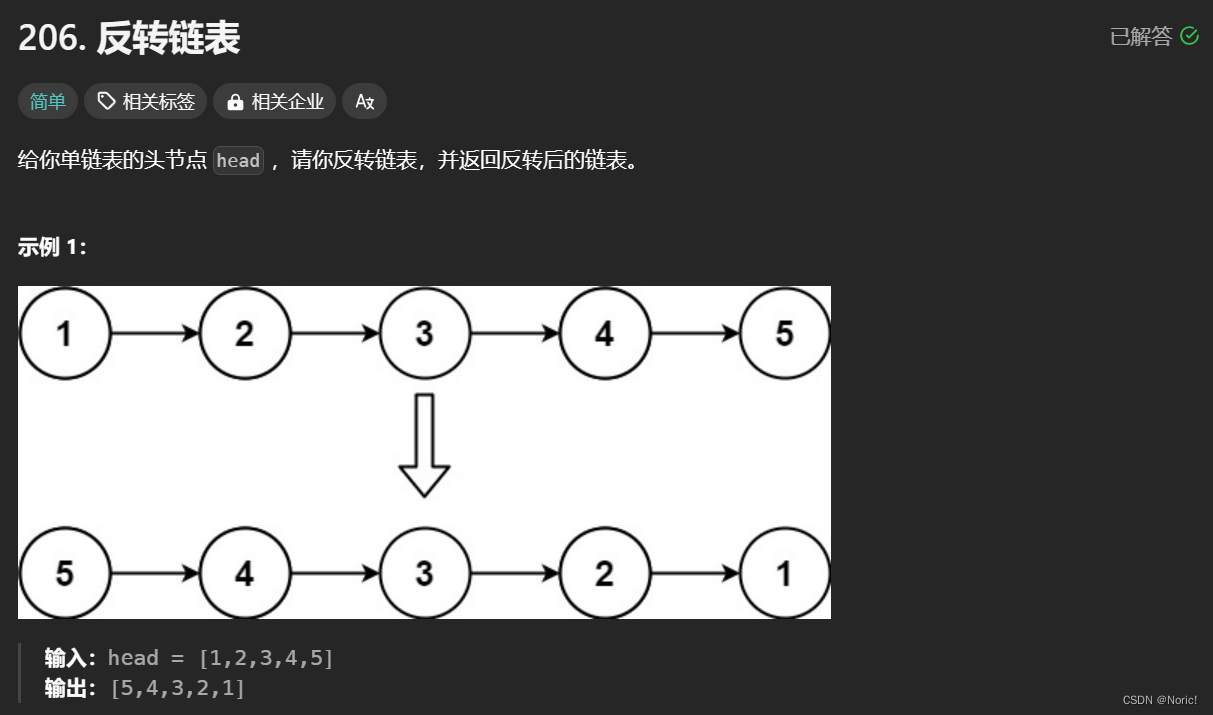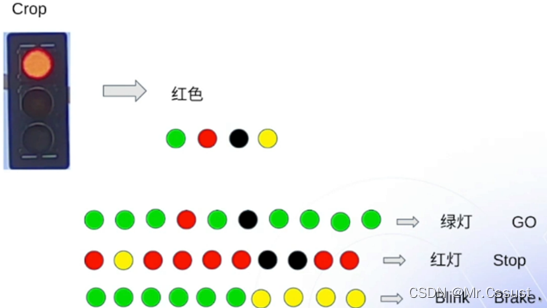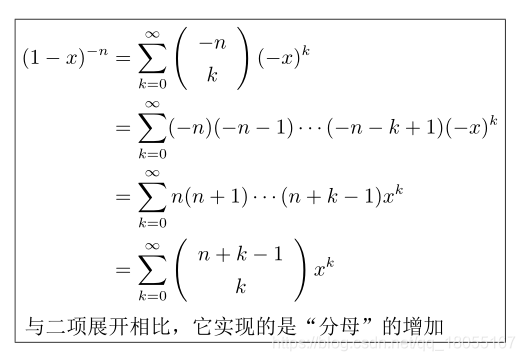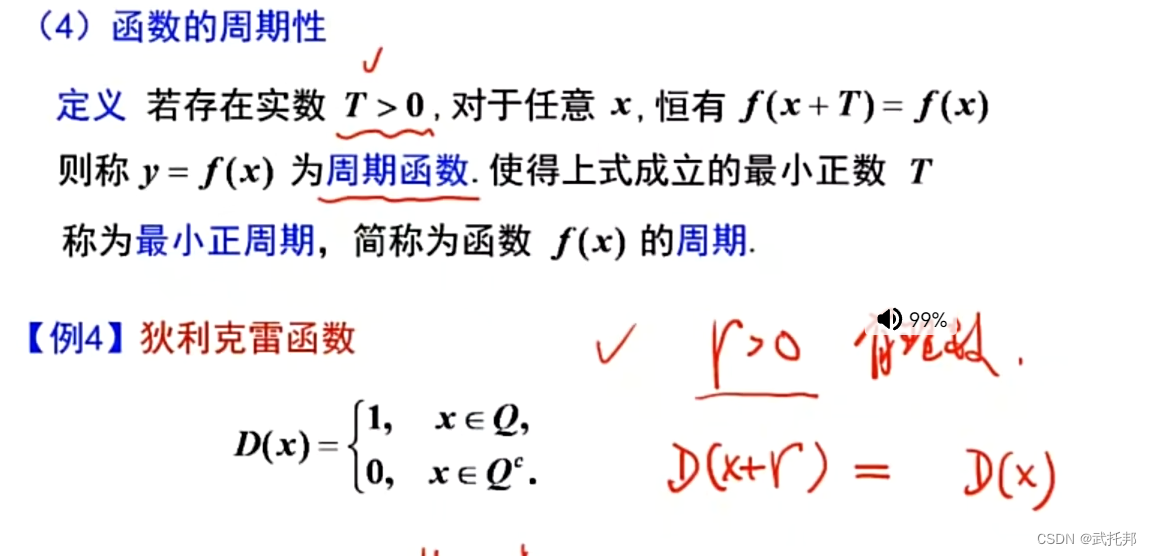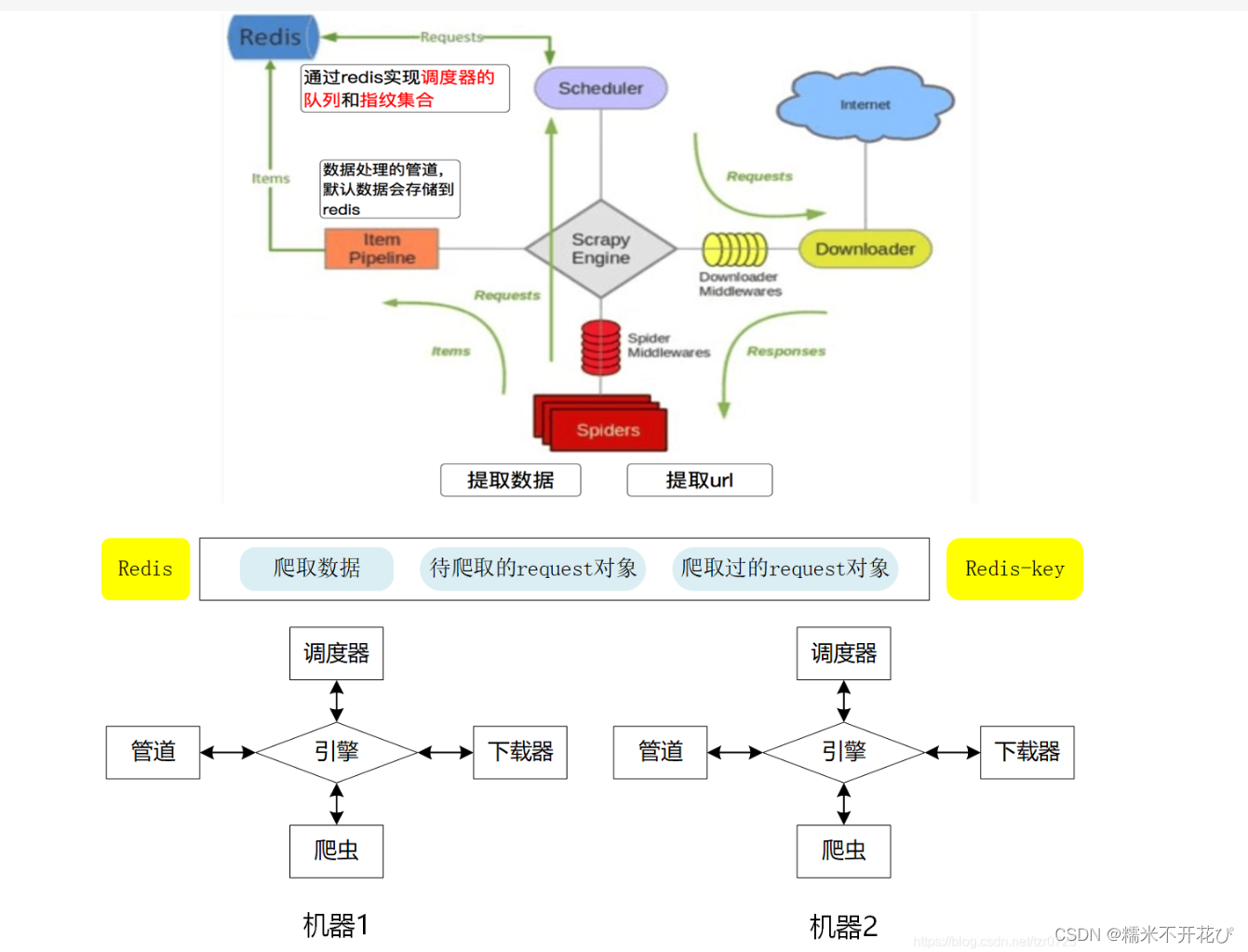JDBC简介和使用
java程序操作数据库的方式有很多种,下面列举一些市面上常用的方式:
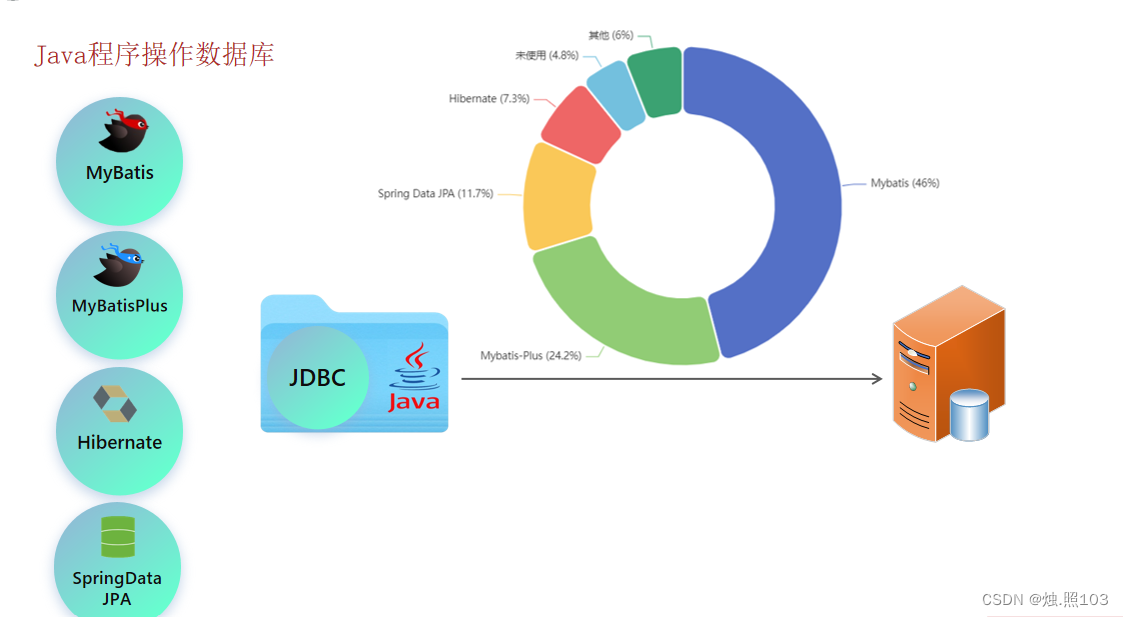
从图片分析的知:
MyBatis MyBatisPlus 这两个所占的比重比较大。都是用于简化JDBC开发的
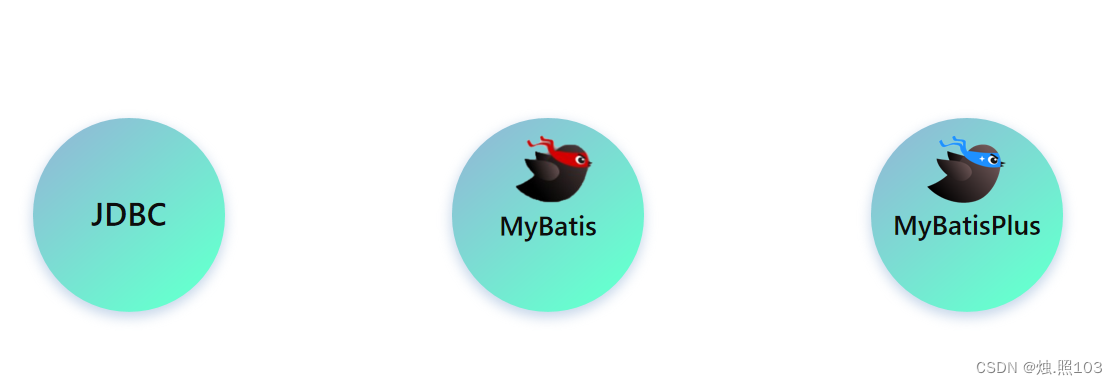
JDBC:(Java DataBase Connectivity),就是使用Java语言操作关系型数据库的一套API。

JDBC的本质:
- sun公司官方定义的一套操作所有关系型数据库
- 各个数据库厂商去实现这套接口,提供忽聚酷驱动jar包
- 我们使用这套接口(JDBC)编程,真正执行的代码时驱动jar包中的实现类
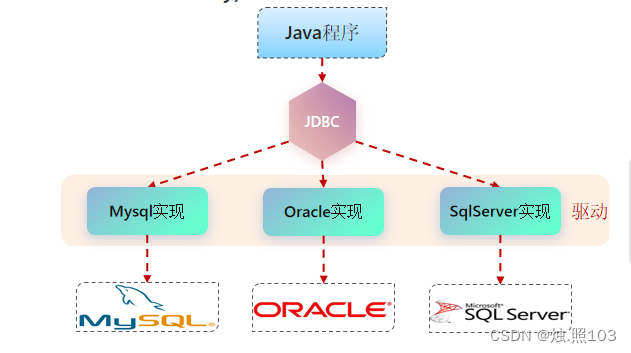
快速入门
- 1,创建项目,引入mysql的驱动,junit依赖
<dependency> <groupId>mysql</groupId> <artifactId>mysql-connector-java</artifactId> <version>8.0.33</version></dependency>
- 2,注册驱动
Class.forName("com.mysql.cj.jdbc.Driver");
- 3,获取连接对象Connection
Connection connection = DriverManager.getConnection(
"jdbc:mysql://localhost:3306/web", "root", "root@1234")
- 4,获取SQL语句自行对象statement
Statement statement = connection.createStatement();
- 5, 执行SQL语句:
statement.executeUpdate("update user set password = '1234567890' where id = 1");
- 6, 释放资源:
statement.close();connection.close();
1,创建maven项目,引入MySQL的驱动和junit单元测试的依赖
在工程下,右击然后点击new,选择Module
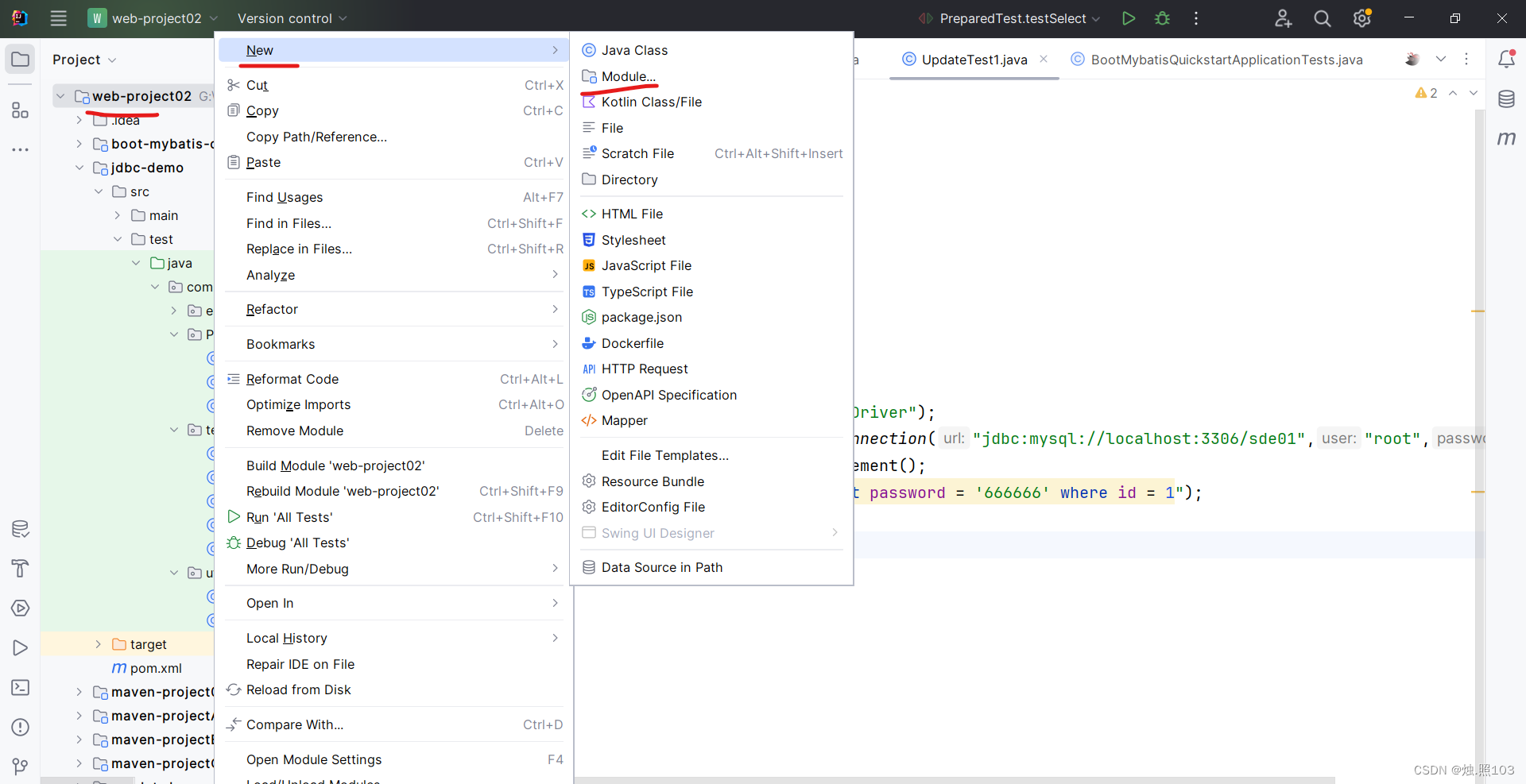
选择 New Module 然后根据自己情况完成右边的配置

创建好工程之后,添加依赖。
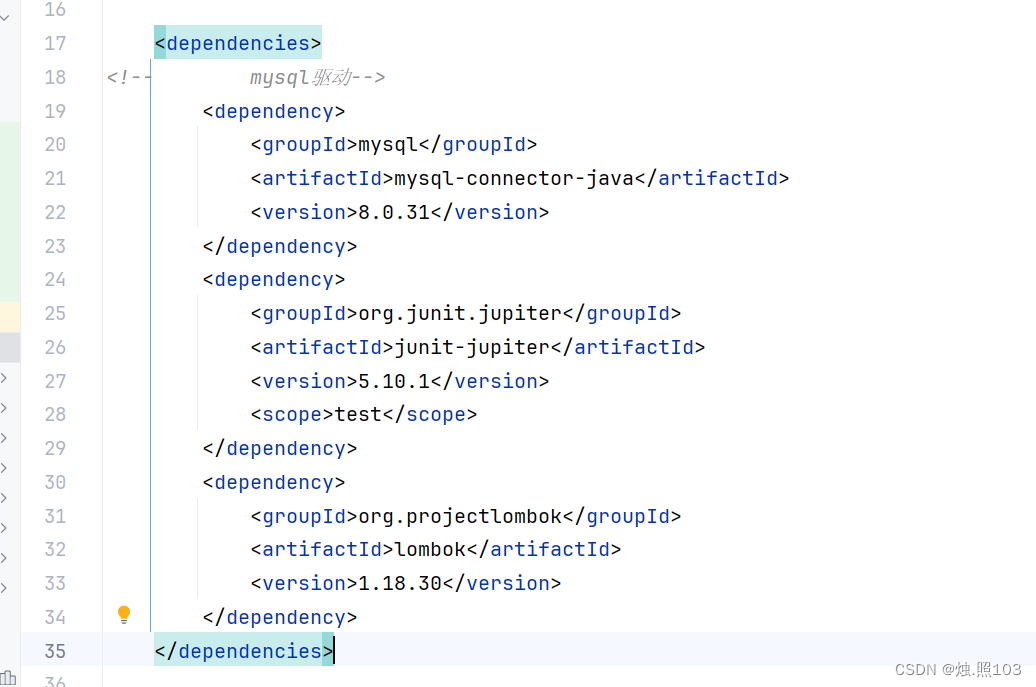
2,注册驱动
//注册驱动
Class.forName("com.mysql.cj.jdbc.Driver");3,获取连接对象Connection
// 获取连接对象
Connection connection = DriverManager.getConnection("jdbc:mysql://localhost:3306/sde01","root","root");
4,获取SQL语句自行对象statement
// 获取执行SQL的对象
Statement statement = connection.createStatement();5, 执行SQL语句:
//执行SQL
statement.executeUpdate("update user set password = '666666' where id = 1");6, 释放资源:
statement.close();
connection.close();完整操作:
这个数据库是我本地的sde01库中的user表
create table user(
id int unsigned primary key auto_increment comment 'ID,主键',
username varchar(20) comment '用户名',
password varchar(32) comment '密码',
name varchar(10) comment '姓名',
age tinyint unsigned comment '年龄'
) comment '用户表';
insert into user(id, username, password, name, age) values (1, 'daqiao', '123456', '大乔', 22),
(2, 'xiaoqiao', '123456', '小乔', 18),
(3, 'diaochan', '123456', '貂蝉', 24),
(4, 'lvbu', '123456', '吕布', 28),
(5, 'zhaoyun', '12345678', '赵云', 27);我们在maven工程中,com.sde包下的子包 entity包创建一个User实体类
public class User {
private Integer id;
private String password;
private String username;
private String name;
private Integer age;
public User() {
}
public User(Integer id, String password, String username, String name, Integer age) {
this.id = id;
this.password = password;
this.username = username;
this.name = name;
this.age = age;
}
@Override
public String toString() {
return "User{" +
"id=" + id +
", password='" + password + '\'' +
", username='" + username + '\'' +
", name='" + name + '\'' +
", age=" + age +
'}';
}
}在创建一个测试类UpdateTest1:
@Test
public void testJdbc() throws Exception {
//注册驱动
Class.forName("com.mysql.cj.jdbc.Driver");
// 获取连接对象
Connection connection = DriverManager.getConnection("jdbc:mysql://localhost:3306/sde01","root","root");
//创建执行SQL的对象
Statement statement = connection.createStatement();
//返回影响的行数
int rows = statement.executeUpdate("update user set password = '666666' where id = 1");
System.out.println(rows > 0 ? "修改成功" : "修改失败");
//关闭资源
statement.close();
connection.close();
}
}结果:
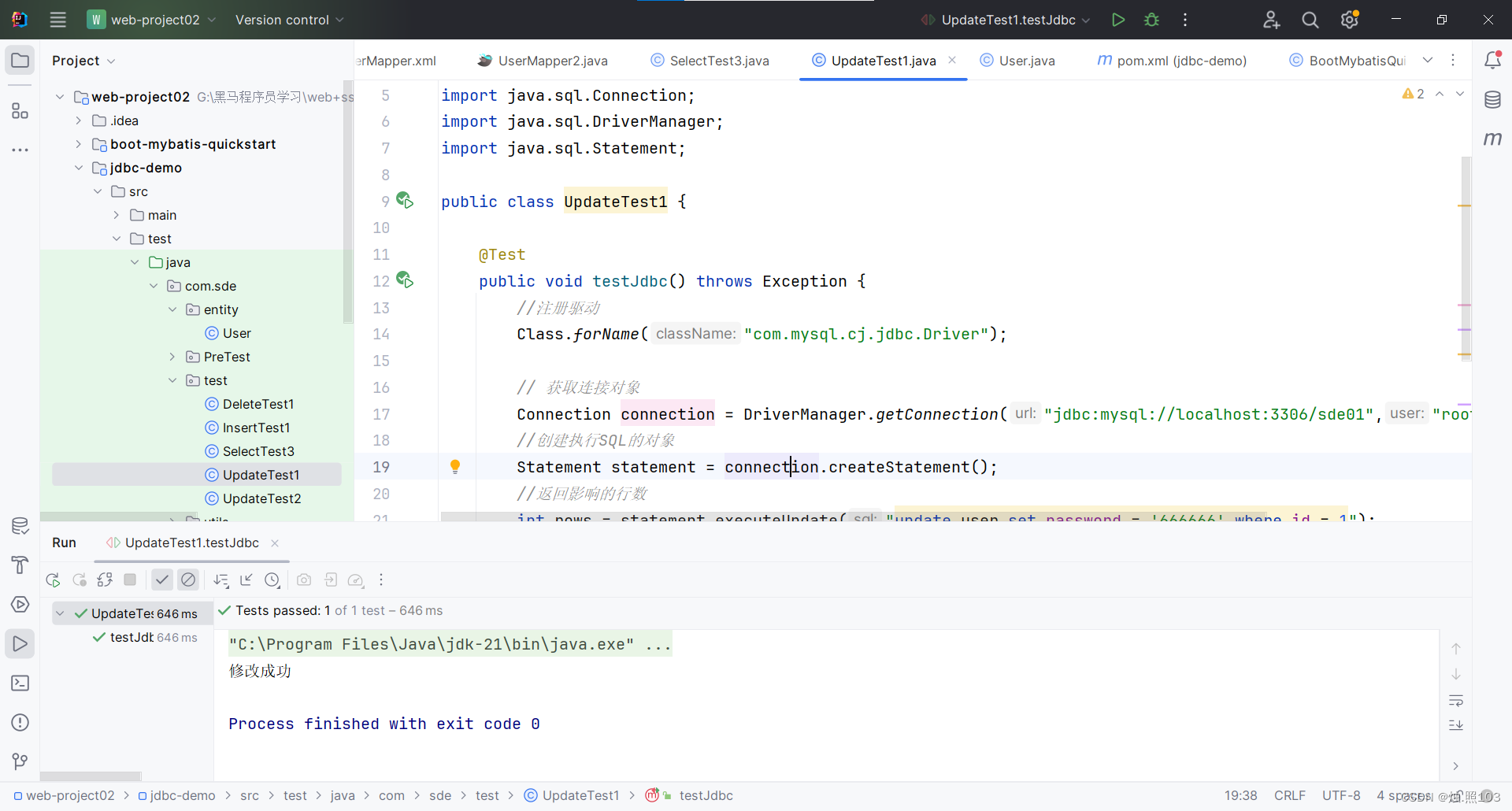
jdbc中的API详解
DriverManager
驱动管理器 ,注册驱动, 获取数据库连接 DriverManager.registerDriver(...)
注册驱动的步骤:
1,当类加载Driver驱动类时,会自动运行静态代码块中
2,Class.forName这步操作可以省略
SPI机制:Service Provider Interface,JDK内置的一种服务提供发现机制,可以轻松的扩展你得程序(切换实现),实现接口与实现类之间的解耦。

3 获取数据库连接:DriverManager.getConnection(url,user,password);
- url:数据库连接的url
- 语法:jdbc:mysql://ip地址(域名)/数据库名?参数键值对1&参数键值对2。
- 说明:如果连接的时是本机的默认端口的mysql,url可以简写为:jdbc:mysql:///数据库名?参数键值对...
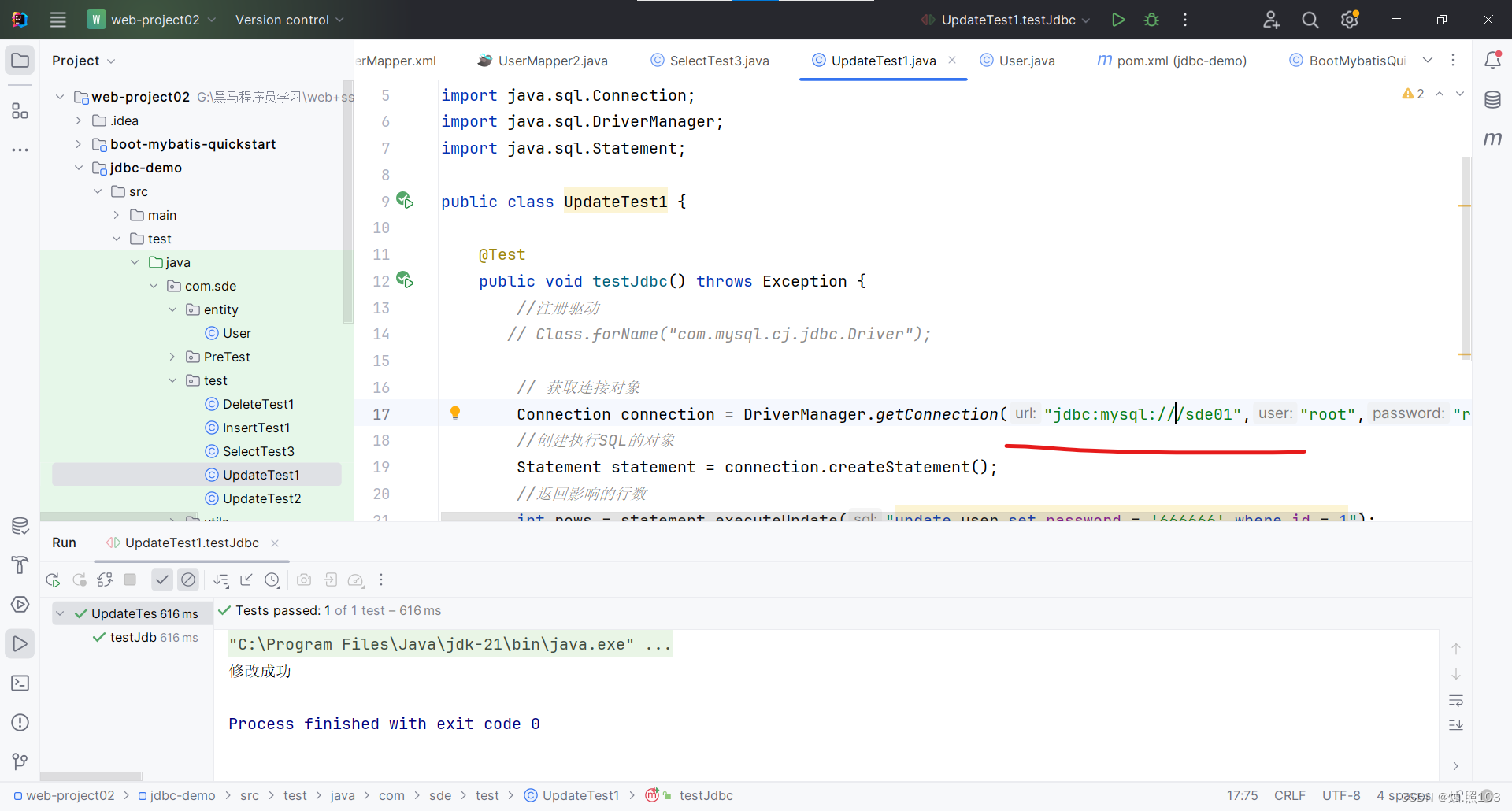
user:用户名
password:数据库的密码
Connection
Connection的作用:获取执行SQL的对象
执行普通SQL对象Statement:connection.createStatement()执行预编译SQL对象PreparedStatement:connection.preparedStatement()
可以通过PreparedStatement解决SQL注入问题
- 获取PreparedStatement对象
- 设置参数值
- 执行SQL
@Test
public void testLogin() throws Exception {
Connection connection = PjdbcUtils.getConnection();
String sql = "select * from user where username = ? and password = ?";
PreparedStatement ps = connection.prepareStatement(sql);
ps.setString(1,"xiaoqiao");
ps.setString(2,"123456");
ResultSet resultSet = ps.executeQuery();
while (resultSet.next()){
int id = resultSet.getInt("id");
String username = resultSet.getString("username");
String password = resultSet.getString("password");
String name = resultSet.getString("name");
int age = resultSet.getInt("age");
User user = new User(id,username,password,name,age);
System.out.println(user);
}
PjdbcUtils.close(connection,null,resultSet);
}效果:
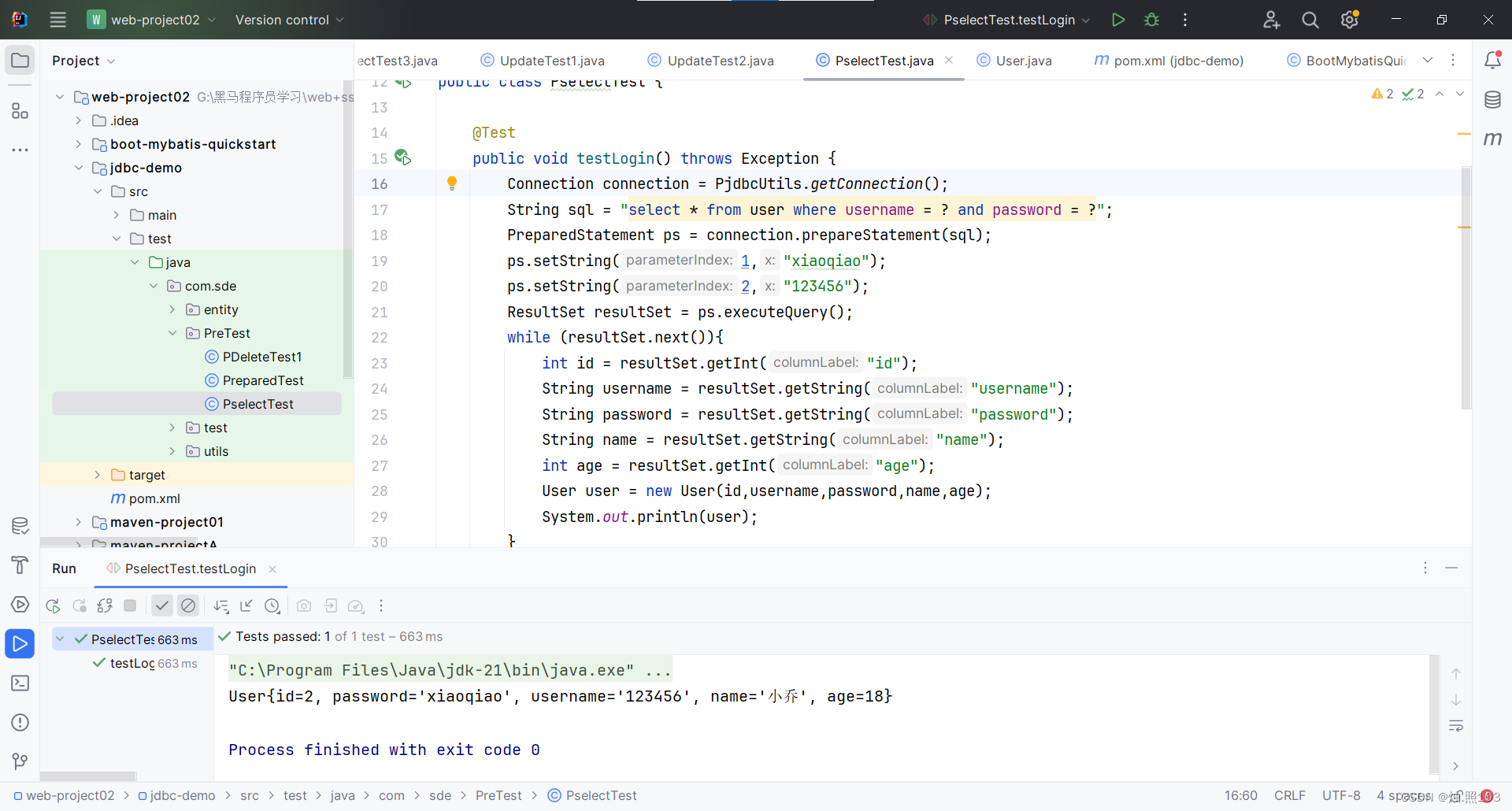
Statement
statement的作用:执行SQL
- 执行DDL、DML语句:executeUpdate(sql); 如果是执行DML语句完毕,返回值int代表DML语句影响的函数。
- 执行SQL语句:executeQuery(sql); 返回值为ResultSet,里面封装了查询结果。
执行增删改executeUpdate() 会返回一个int类型的数据,表示影响的行数
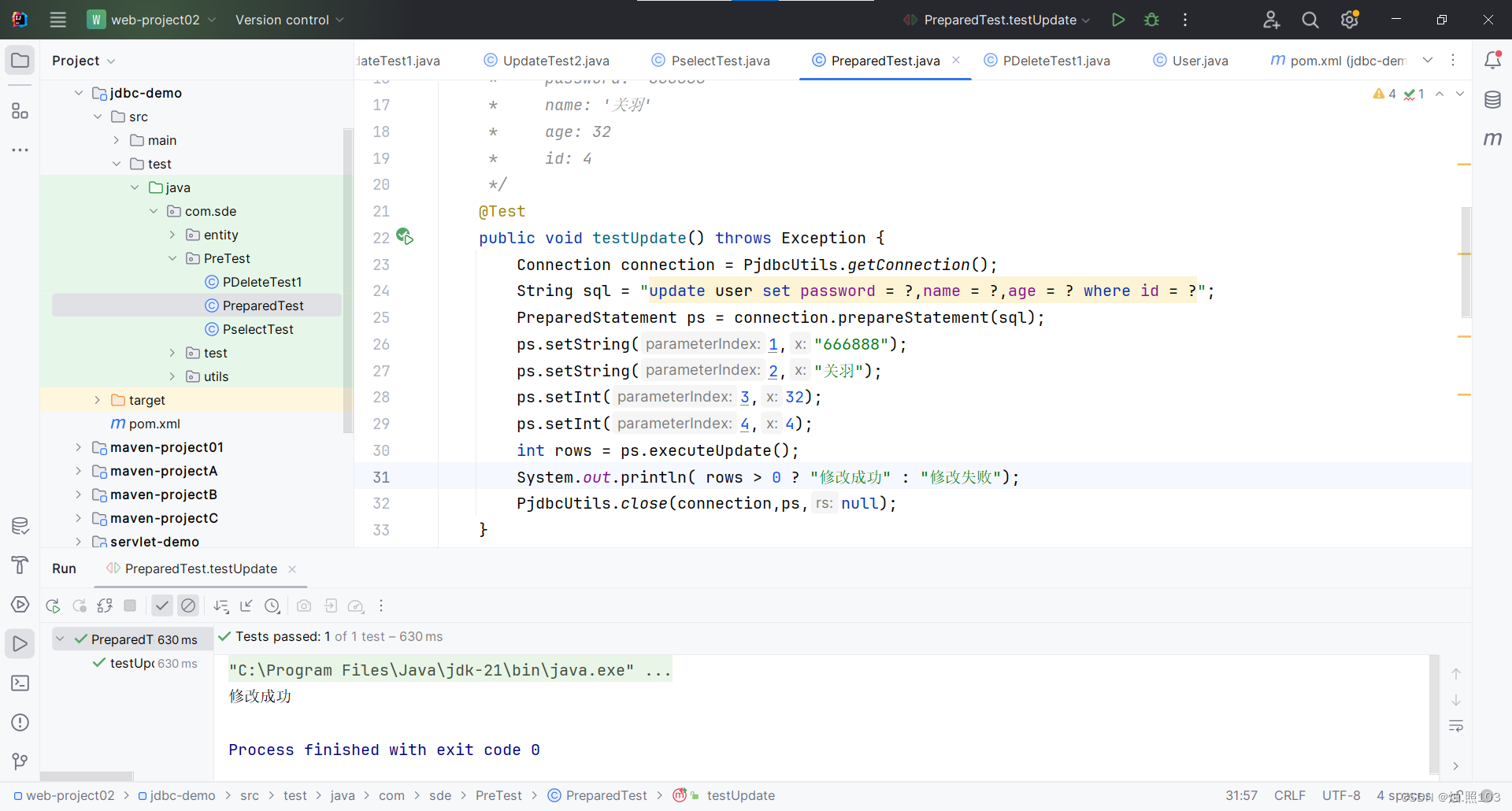
执行查询时executeQuery() 会返回一个ResultSet的结果集
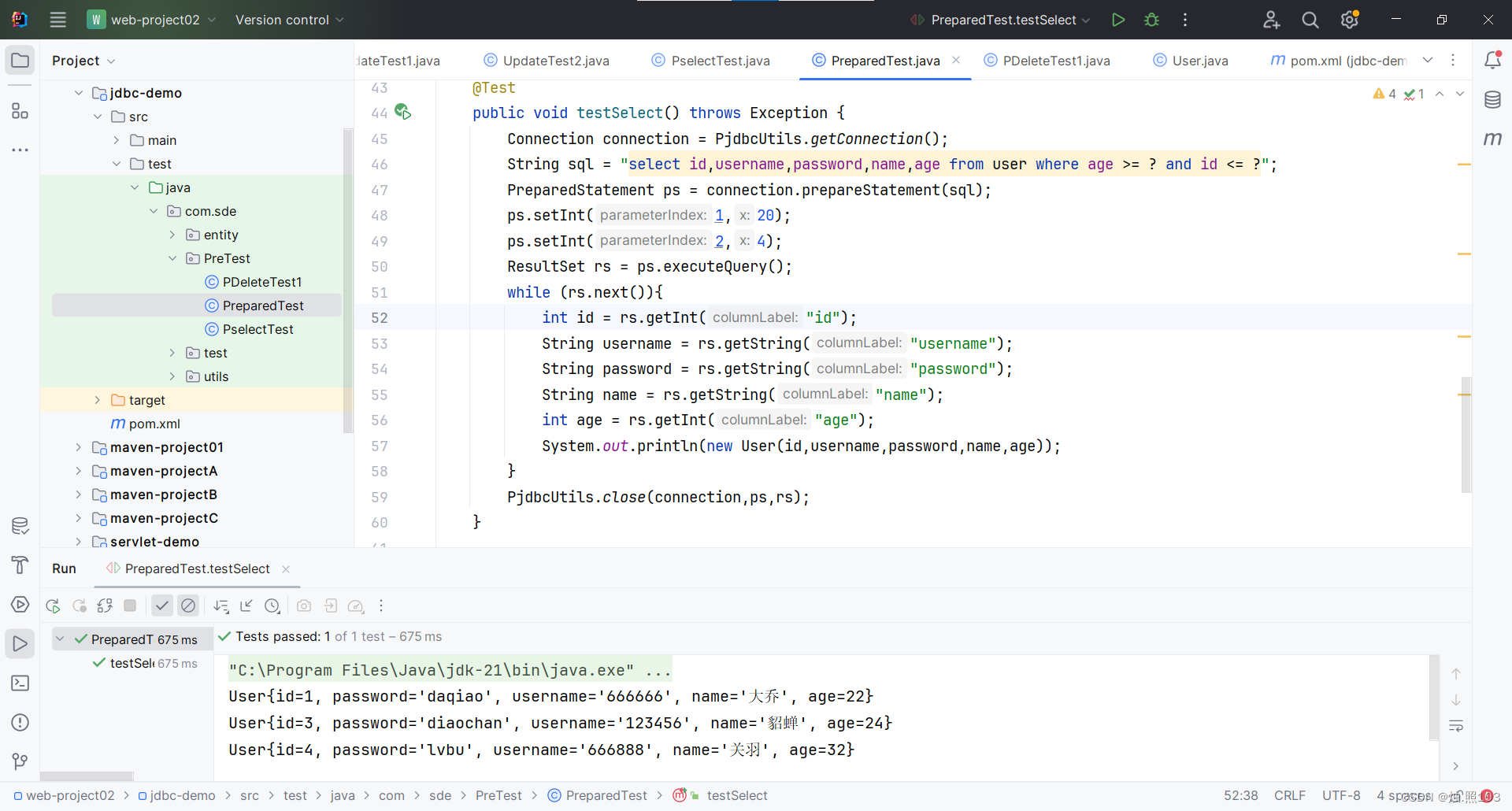
ResultSet
- ResultSet(结果对象集):封装了DQL查询语句查询的结果。
- next() 将光标从当前位置向前移动一行,并判断当前行是否是有效行,返回值为boolean
- getXxxx()获取数据:可以根据列的编号获取,也可以根据列名获取(推荐使用)
ResultSet rs = ps.executeQuery();
while (rs.next()){
int id = rs.getInt("id");
String username = rs.getString("username");
String password = rs.getString("password");
String name = rs.getString("name");
int age = rs.getInt("age");
System.out.println(new User(id,username,password,name,age));
}
PjdbcUtils.close(connection,ps,rs);
}PreparedStatement
优势:
1,安全(防SQL注入)
2,性能高
1,获取PreparedStatement对象2,设置参数值 3,执行SQL
新建一个JDBC工具类,PjdbcUtils类
public class PjdbcUtils {
public static final String URL = "jdbc:mysql://localhost:3306/sde01"; //改成你自己的数据库
public static final String USER = "root"; //改成你自己的用户名
public static final String PASSWORD = "root"; //改成你自己的密码
public static Connection getConnection(){
//加载驱动
try {
Class.forName("com.mysql.cj.jdbc.Driver");
}catch (ClassNotFoundException e){
e.printStackTrace();
}
//连接数据库
Connection con = null;
try {
con = DriverManager.getConnection(URL,USER,PASSWORD);
}catch (SQLException e){
e.printStackTrace();
}
return con;
}
//关闭连接
public static void close(Connection con, Statement state, ResultSet rs) {
if (rs != null) {
try {
rs.close();
} catch (SQLException throwables) {
throwables.printStackTrace();
}
}
if (state != null) {
try {
state.close();
} catch (SQLException throwables) {
throwables.printStackTrace();
}
}
if (con != null) {
try {
con.close();
} catch (SQLException throwables) {
throwables.printStackTrace();
}
}
}
}使用JDBC完成增删改查的案例:
@DisplayName("使用PreparedStatement完成增删改查")
public class PselectTest {
/**
* 测试查询功能
* @throws Exception
*/
@Test
@DisplayName("测试查询功能")
public void testLogin() throws Exception {
Connection connection = PjdbcUtils.getConnection();
String sql = "select * from user where username = ? and password = ?";
PreparedStatement ps = connection.prepareStatement(sql);
ps.setString(1,"xiaoqiao");
ps.setString(2,"123456");
ResultSet resultSet = ps.executeQuery();
while (resultSet.next()){
int id = resultSet.getInt("id");
String username = resultSet.getString("username");
String password = resultSet.getString("password");
String name = resultSet.getString("name");
int age = resultSet.getInt("age");
User user = new User(id,username,password,name,age);
System.out.println(user);
}
PjdbcUtils.close(connection,null,resultSet);
}
/**
* 测试删除功能
* @throws Exception
*/
@Test
@DisplayName("测试删除功能")
public void testDel() throws Exception {
Connection connection = PjdbcUtils.getConnection();
String sql = "delete * from user where id = ?";
PreparedStatement ps = connection.prepareStatement(sql);
ps.setInt(1,6);
ps.executeUpdate();
PjdbcUtils.close(connection,ps,null);
}
@Test
@DisplayName("测试修改功能")
public void testUpdate() throws Exception {
Connection connection = PjdbcUtils.getConnection();
String sql = "update user set username = ?,password = ?,name = ?,age = ? where id = ?";
PreparedStatement ps = connection.prepareStatement(sql);
ps.setString(1,"sundaoen");
ps.setString(2,"121212");
ps.setString(3,"戴恩");
ps.setInt(4,18);
ps.setInt(5,6);
int rows = ps.executeUpdate();
System.out.println(rows > 0 ? "修改成功" : "修改失败");
PjdbcUtils.close(connection,ps,null);
}
@Test
@DisplayName("测试新增功能")
public void testAdd() throws Exception {
Connection connection = PjdbcUtils.getConnection();
String sql = "insert into user values(null,?,?,?,?)";
PreparedStatement ps = connection.prepareStatement(sql);
ps.setString(1,"luban");
ps.setString(2,"666666");
ps.setString(3,"鲁班");
ps.setInt(4,13);
int rows = ps.executeUpdate();
System.out.println(rows > 0 ? "添加成功" : "添加失败");
PjdbcUtils.close(connection,ps,null);
}
}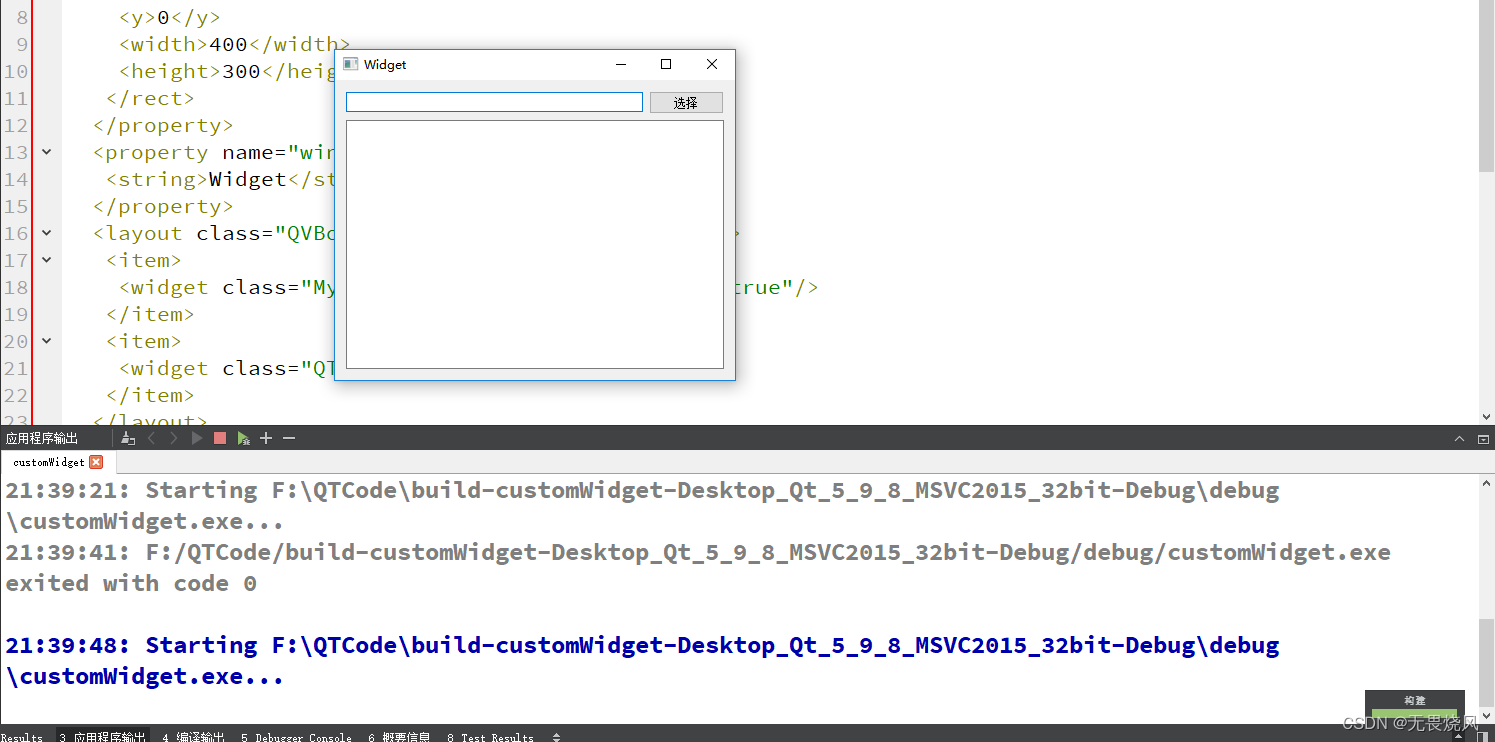

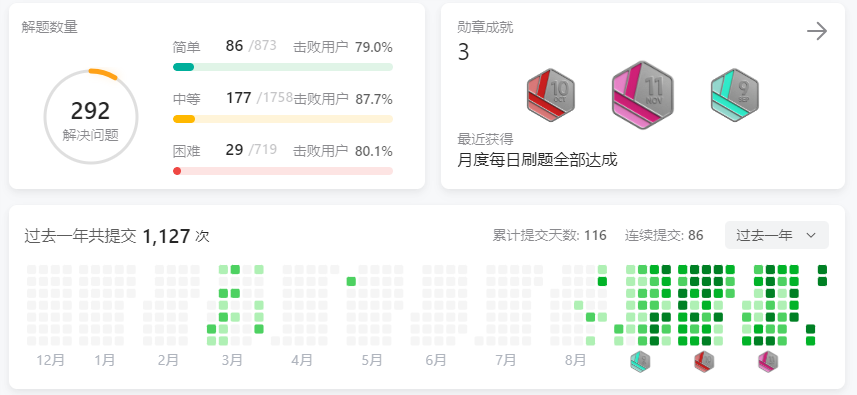
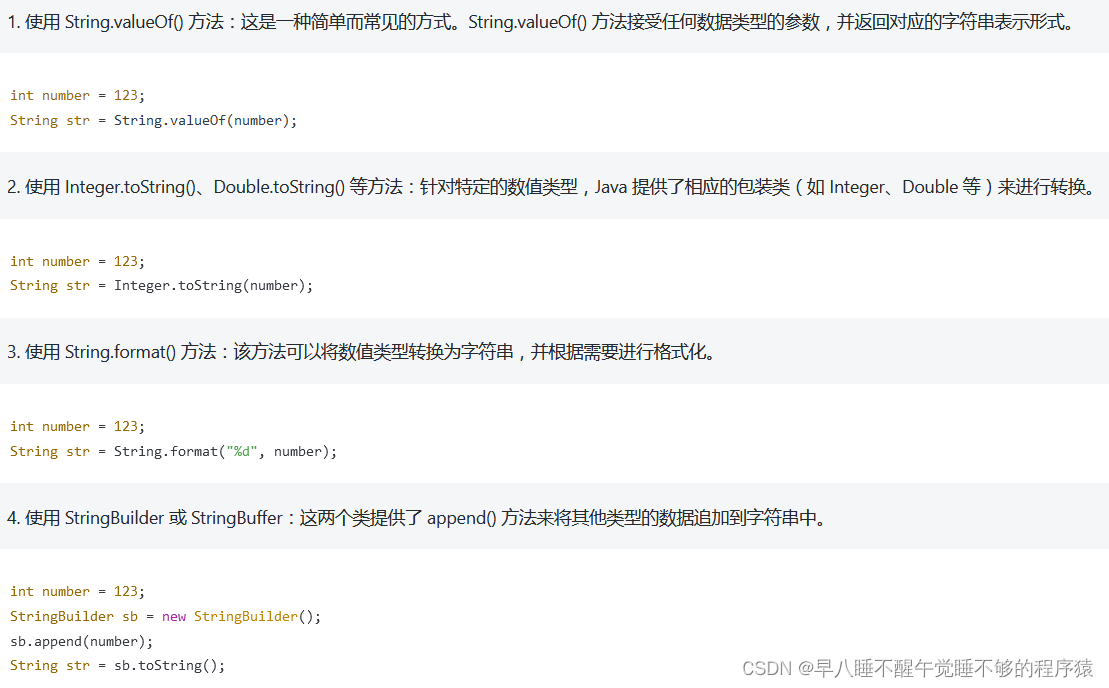
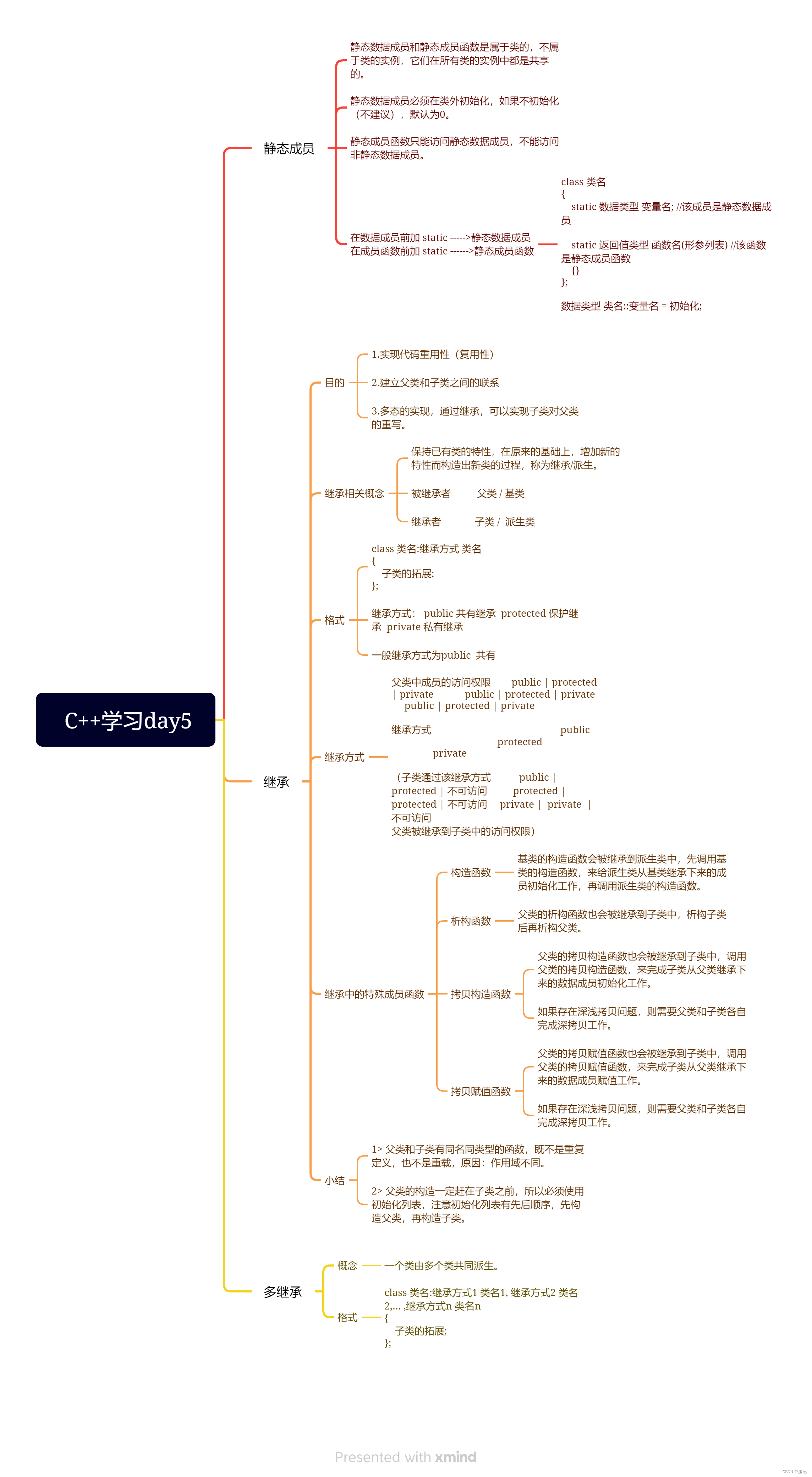

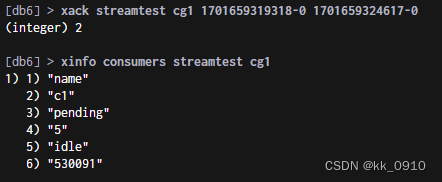
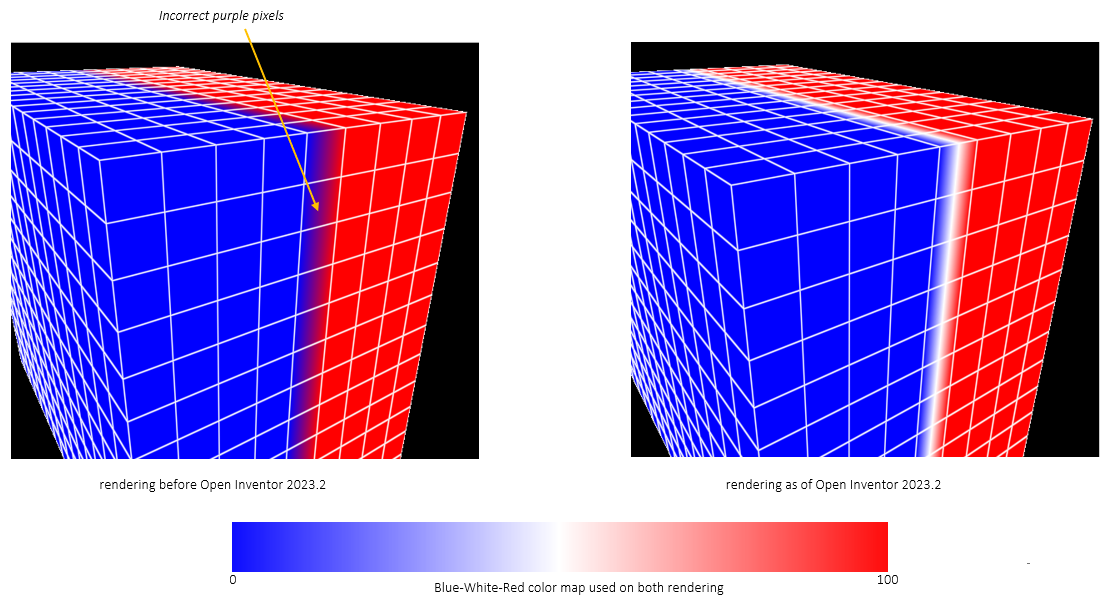

![[ 蓝桥杯Web真题 ]-视频弹幕](https://img-blog.csdnimg.cn/direct/b351eae9d647428e85bfe751cfedc070.gif)
